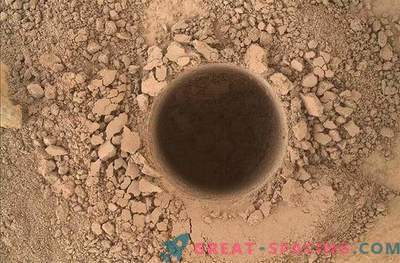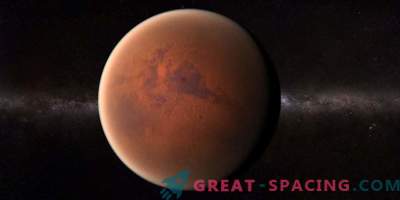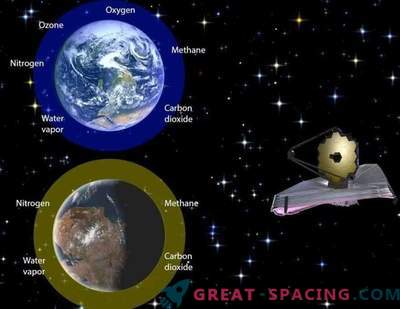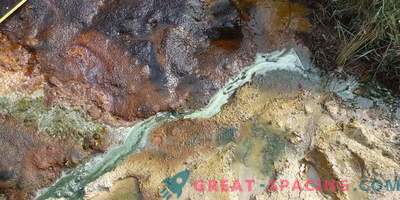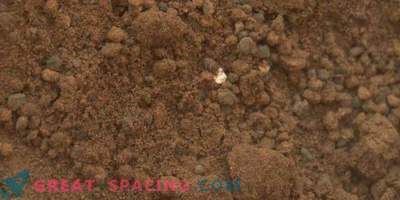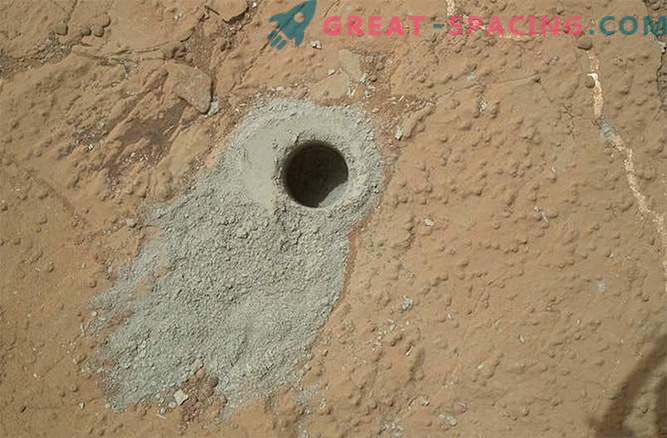
NASA's discovery of the presence of organic compounds in the soil and the methane plume in the air suggests whether there is another planet in the solar system where life similar to that of the earth exists.
Recently, the Curiosity rover transmitted data that Martian soil is 2% water. This indicates that life once upon a red planet existed. And this opens up good prospects for the future construction of human colonies on Mars.
Traces of methane, which were discussed at a press conference of scientists on Tuesday, plunge researchers into the game of expectations. Is methane actually characteristic of the atmosphere of Mars or is it an annoying coincidence?

Curiosity Mars Rover at Work
Between November 2013 and January 2014, atmospheric samples collected and analyzed by Curiosity demonstrated a tenfold increase in the concentration of methane, a gas that on earth is associated with organic life.
The main mission of the rover, which is currently exploring the mound of sedimentary rocks on the surface of Mars, is to constantly analyze the Martian air for the presence of methane there. This was stated by leading expert of the California Institute of Technology in Pasadena, John Groesinger. If a high concentration of methane is detected in the obtained samples, they will try to enrich them on board the rover’s chemical laboratory by removing carbon dioxide from them so that as much pure methane as possible is left for the analysis. Multi-stage studies of the rate of dispersion of methane will help determine the source of its appearance. Today it is assumed that methane emissions occur in the immediate vicinity of the crater Gail.
If a large-scale exhaust of methane is detected, scientists will have the opportunity to analyze its isotopic composition. Because of this, it is possible to judge whether living microorganisms produced it (for example, microbes), or whether it is a by-product of geochemical processes — transformations of hydrated minerals or the consequences of a meteorite falling.

Photo of the atmosphere of Mars
Judging by methane emissions, Mars is currently actively interacting with the atmosphere. This was the message Sashil Atreya of the University of Michigan at Ann Arbor made during the press conference of the American Geophysical Union. After 18 months of research on the history of Mars, it was found that organic chlorobenzene was found in samples drilled from the ancient Cumberland mudstone.
The search for larger-scale traces of organic matter and large molecules presents serious difficulties, since the process of transformation of sediments into rock takes place with the destruction of organic substances. In addition, cosmic ray explosions occur on the surface of Mars, which actively oxidizes the soil. That is why the planet has a reddish tint associated with the destruction of iron. As a result, the soil is impregnated with molecular chlorine, which can interact with organic matter and transform it. “Perhaps we can never get a new batch of evidence of the existence of organic matter on Mars. But! We will always be able to explore existing patterns, which will help us learn new facts about the life of the Red Planet, ”says Grotzinger.
At the moment, scientists have no idea where the organic compounds in the samples came from: from the remnants of a meteorite, from cosmic dust or from the vital activity of some organism.
Grotzinger also noted that the possibilities for distinguishing the biotic and abiotic nature of organic compounds are extremely small.






